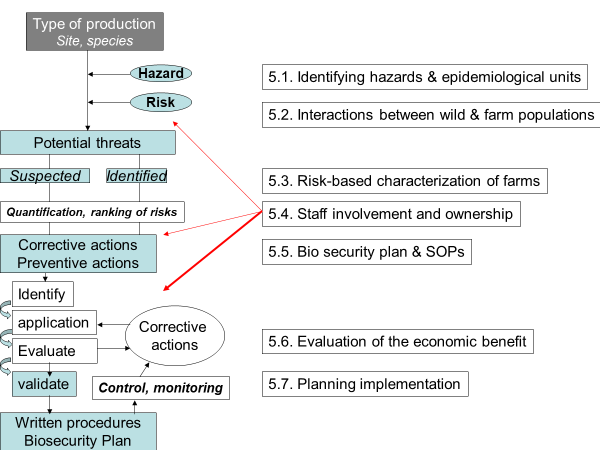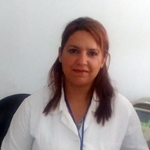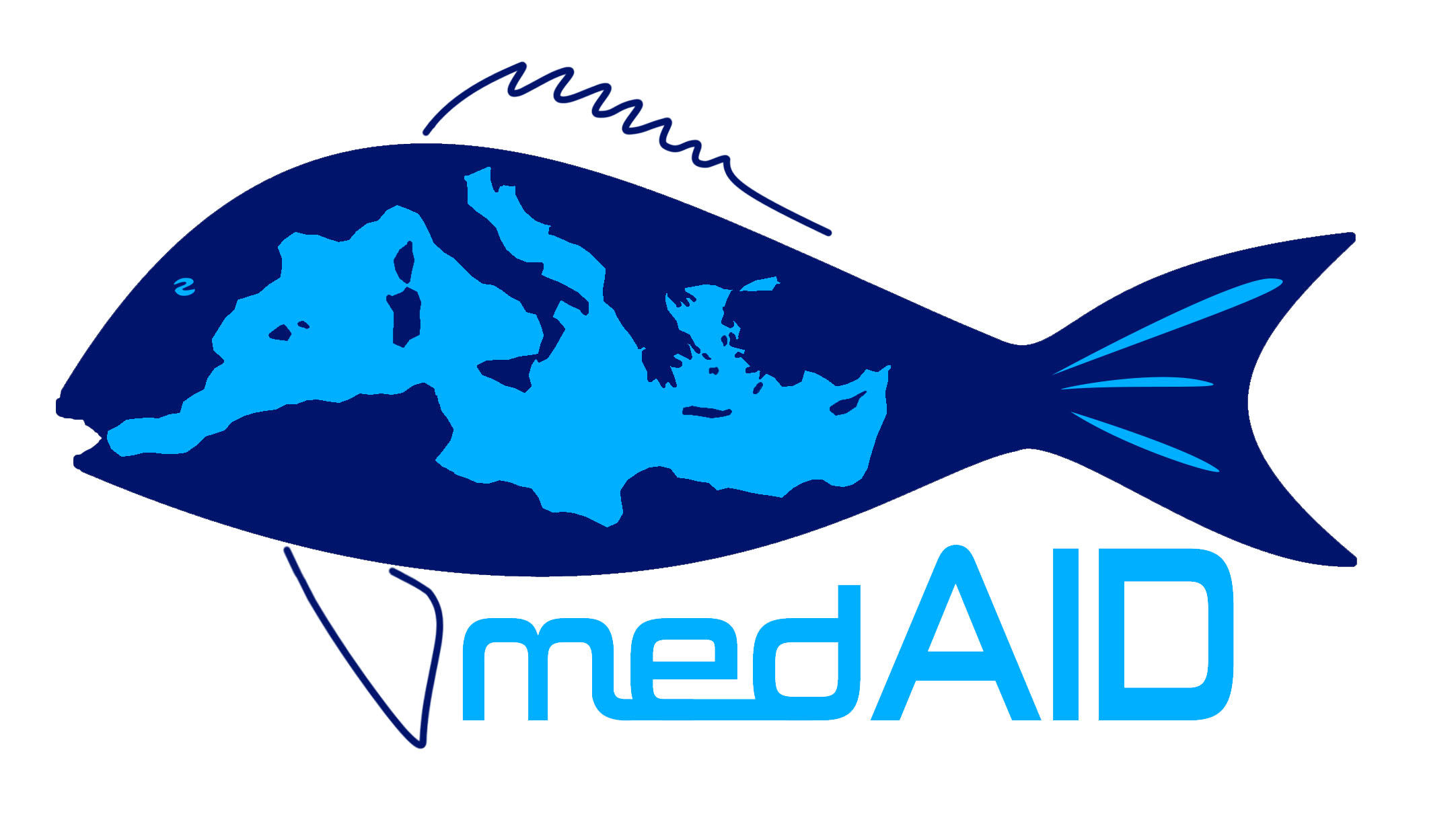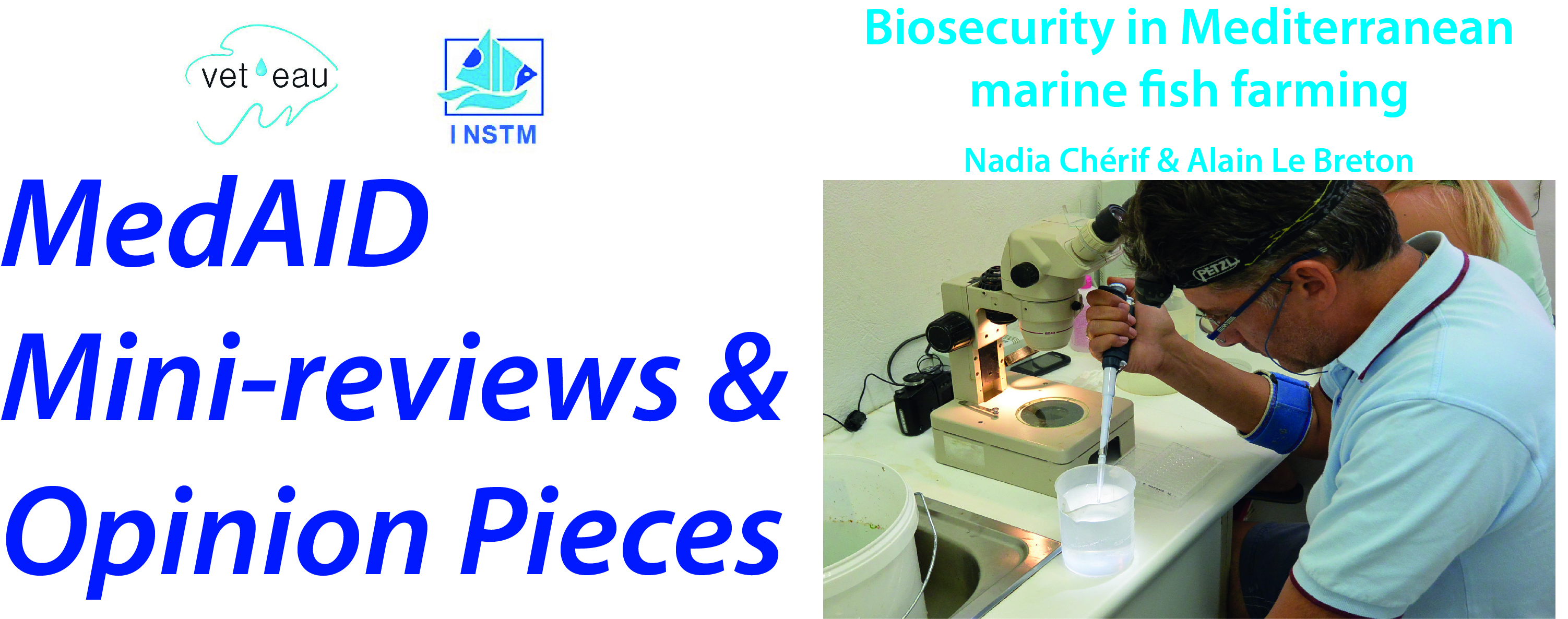1. Introduction
Transboundary aquatic animal diseases are highly contagious and the transmissible agents have the potential to spread them very rapidly irrespective of national borders, with serious socio-economic and possible health consequences. The great value of aquaculture to contribute to food and nutrition security and poverty alleviation has been recognized by FAO but is hampered by significant biosecurity and animal disease challenges. Addressing biosecurity challenges in aquaculture requires a holistic and transdisciplinary approach that takes into consideration all the essential components (technical, communication, infrastructure, operations, etc.) of an aquaculture biosecurity programme. These programme components cannot stand alone as they are interrelated and interconnected. Due to the different production structures in aquaculture, either in a closed or open environment, epidemiological units must be considered at the farm level but also regional, national and international levels. International organizations such as WTO/OIE/FAO have set up international agreements or guidelines. Recently FAO launched the Progressive Management Pathway for Aquaculture Biosecurity (PMP-AB). At European level, the 2006/88 CE Directive addresses the application of biosecurity in aquaculture businesses. In Mediterranean countries with a developed aquaculture sector, national legislations are also considering biosecurity. Unfortunately, most of the time no regional planning for biosecurity is considered which is a weakness in aquaculture.
Subsequently, health maintenance is now considered to be one of the most important aspects of aquaculture development and management. There are multiple entries and exit routes for site contamination that need to be assessed and controlled. A biosecurity plan has three major components:
• Isolation. Depending on the production facility, it can be difficult in the aquaculture business due to the close relation with the environment, except in land-based units where quarantine should be implemented.
• Traffic control. Especially in aquaculture, movements of live animals (fish, gametes) are important at national and transboundary level, including ornamental businesses.
• Sanitation. Cleaning and disinfection procedures adapted to the specificity of this sector of activity need to be implemented systematically.
The flow chart in Figure 1 indicates the main steps to be followed when implementing such a biosecurity plan in aquaculture businesses. Some templates have been edited to facilitate the implementation of such a plan.

2. Animal management
The movement of aquatic animals at all stages of development (broodstock, seedstock, eggs and animal products for spawner feeding) is a significant risk, frequently reported in cases of pathogen introduction, as is, to a lesser extent, interaction with wild populations.
The supply of healthy animals (eggs, fry, juveniles, broodstock) from a reliable source is crucial. Before any introduction of live animals, enquiries about their health status are required. Preference should be given to sources offering health certification or health guaranties. If not, fish should be sampled for analysis preferably in their place of origin and introduced after confirmation of results. In any case, quarantine procedures are preferably required when introducing live animals on site. Quarantine is one of the most important biosecurity measures to reduce the risk of pathogen introduction when appropriately applied. It requires a specific area physically separated from the rest of the site with full control of inlet water and effluents to avoid the risk of spreading disease. Within the quarantine area, fish batches should be kept separate to avoid cross-contamination and an “all in/all-out” strategy is preferable. A control plan of the fish needs to be implemented according to the particular fish species and its sensitivity to specific pathogens. This includes appropriate analysis and if necessary, metaphylactic treatments to clear the stock and reduce the biological risk as much as possible. Strong sanitation procedures need to be implemented in the facility and for the material used on site.
Production management per batch in the land-based units applying the go forward principle is preferable to minimize the risk of cross-contamination. A health management plan will have to be implemented at all stages of fish development, including a routine sampling of the stock for laboratory analysis and health checks, as well as staff training. This enables better surveillance of the stocks and early detection of clinical signs and disease occurrence. Therefore, corrective preventive or curative actions can be decided, reducing morbidity and mortality risks and increasing meanwhile the welfare of the fish.
3. Pathogen management
Infectious agents in aquaculture are categorized in three groups: (1) exotic diseases that are important to trade (i.e. OIE list of diseases) and are notifiable in case of suspicion or detection (reporting & notification to OIE is mandatory during the outbreak); (2) endemic diseases that impact aquaculture facilities regularly depending on the site, the fish species and the stage of development of the fish causing recurrent losses or impacting production index significantly; (3) newly emerging diseases, including diseases of known etiology introduced in a new geographical area or occurring in a new species and disease of unknown etiology.Some additional measures can be implemented at the national level, requiring notification of the occurrence of some specific pathologies or increased mortalities to local or national authorities. Stamping out procedures are compulsory in case of listed diseases but may be required by local authorities in some specific cases with severe mortalities presenting a sanitary risk at the regional level.
Microorganisms, depending on the species and the developmental stage, maybe a primary pathogen or an opportunistic pathogen whose pathogenicity will be influenced by various factors (rearing conditions, environmental factors, intercurrent diseases). Several pathogens can survive and thrive in “reservoirs” within a facility. Non-living reservoirs include water, system components, equipment, floors and walls, and feed. Living reservoirs include the farmed animals themselves, wildlife (birds, pets, scavengers), plants, and live (or frozen) food. Dry feed, especially extruded feed, does not pose a biotic risk due to its form of processing. However, if not well stored, feeds may degrade and generate some health issues. Understanding the biology of pathogens is important, including the factors that enable them to survive in reservoirs and how they can be combatted with common disinfectants. Additionally, it is important to notice that the disease may be spread from the production site by its effluents. Mortalities, sewage waters, processing waste and effluents from cleaning operations are potential vectors of pathogens and need to be properly controlled. Pathogens can enter facilities via equipment, persons and transport vehicles moving between sites. In land-based facilities, inlet water represents a critical and risky point depending on the farming system, water filtration and water treatment applied. In sea-based operations, this risk is almost impossible to control and in zones with concentrated aquaculture facilities, it poses the main possible hazard.
4. Sanitation and disinfection
Cleaning & Disinfection (C&D) procedures is a five-step scheme and most pitfalls occur when any of these steps are disregarded. Disinfection should always follow an initial sanitation phase which will already remove almost 90% of the microorganisms present in the structure. No standard procedures exist. C&D procedures including the choice of the chemicals applied should be adapted to the specific condition of the structure (type of surface and material, pathogens involved, water pH and hardness, time of contact, effluent management and environmental impact).
Cleaning involves removing all foreign material (soil, organic material, biofilm) from objects by scrubbing them thoroughly. Good sanitation practice includes water filtration and aeration systems cleaning, discarding uneaten food, dead or dying fish (a major pathogen reservoir), and disposing of them according to relevant regulations. All equipment, all surfaces within the facility, and all vehicles must be cleaned. Different types of sanitizers can be applied including tension active molecules to improve their efficiency, depending on the surface considered. In RAS, on-site cleaning procedures are applied for systems which cannot be dismantled. The efficacy of the sanitizing solutions applied will depend on the time of contact and the concentration of the product.
Disinfection is the second step; it eliminates most pathogenic microorganisms, except sporulated forms. Disinfection is also effective only if organisms on all surfaces are exposed to an appropriate disinfectant at the recommended concentration for the recommended length of time. There are a number of disinfection methods that can be used in aquaculture. Logistics, residue toxicity, and cost will determine which methods will work best for a given situation and regulations regarding the use of a specific method or agent. Most common disinfection methods are either physical or chemical. Physical methods for disinfecting equipment include heat, sunlight and drying. Exposure to high temperatures kills all active microorganisms, but some life stages such as spores may require much longer periods. Sunlight can be effective, but exposure time will vary depending upon intensity, temperature and other factors, and little research has been done on effective exposure times. Drying equipment can also help reduce pathogen numbers, although spores, cysts or eggs may survive treatment. Chemical disinfectants are very useful, but vary in their effectiveness against specific disease agents. The commonly used chemical disinfectants are inorganic chlorine products (bleach, such as sodium hypochlorite or calcium hypochlorite), Virkon Aquatic, quaternary ammonium compounds (QACs) usually associated with glutaral, chlorhexidine, alcohols (such as isopropyl alcohol), iodophors, hydrogen peroxide, phenol derivatives, and formaldehyde. Some products such as stabilized peroxide are more adapted for on-site disinfection in RAS. A final step of disinfection of the wall structure in closed environments by fumigation or micro nebulization is very efficient, especially in case of viral hazards.
The efficacy of C&D procedures should be validated using classic bacterial methods (Petri films, contact dish) or by ATP-metry which allows an immediate reading.
5. People management
Biosecurity will be successful only if managers, staff and visitors understand and follow the necessary practices. Employees and visitors who do not follow established protocols will increase the risk of disease. Access to sensitive areas should be restricted to authorized personnel. Visitors who come to the facility immediately after visiting another aquaculture facility should be considered a serious risk. Once a biosecurity programme is in place, ongoing training programmes should be provided for employees and reviewed periodically. To help prevent the introduction of diseases, disinfectant footbaths, hand-washing stations or alcohol spray bottles, net disinfection stations, showers, and vehicle disinfection stations are largely used. They are placed in strategic locations (including at entrances and between systems) to make them easy to use and to maximize their effectiveness.
6. Developing a written biosecurity programme
The most effective way to ensure biosecurity at an aquaculture facility is to develop a written biosecurity programme based on risk analysis. Biosecurity audits are required to identify all the potential sanitary risks present on a production site and their related hazards. While those risks are identified and prioritized, adequate procedures will be implemented to control and prevent them. Procedures applied need to be written down, compiled in a biosecurity plan and explained to the farm staff who must be involved in the biosecurity process at all levels (managers, technicians, etc.) to make sure all employees, suppliers, visitors, and others who may enter the facility are educated about the plan and cooperate with it. Training sessions for personnel are required, especially regarding good health management practices. An appropriate biosecurity management plan will help to access and prioritize all risks and hazards relevant to the farm. Implementation and maintenance of good biosecurity practices will lead to prevention and reduction of associated risks. A biosecurity plan will include a contingency plan in case of health issues, diagnostic procedures and treatment procedures.
In addition, surveillance and monitoring programmes are essential for the detection and rapid emergency response to significant disease outbreaks and form the basis for early warning of exotic incursions or newly emerging diseases. Surveillance also provides the building blocks of information necessary to gain an accurate picture of the distribution and occurrence of diseases relevant to biosecurity, and the international movement of aquatic animals and their products. Surveillance may be passive (reactive and general) or active (proactive and targeted). In both cases, there must be adequate reporting mechanisms so that suspected cases of a serious disease can be quickly brought to the attention of the competent authority.
![]() Complete article with references
Complete article with references
Authors:

VET’EAU, France

INSTM, Tunisia


Thanks Nadia and Alain, good job, all the practical aspects have been considered but with a solid scientific basis .
Great Effort Nadia and Alain, appreciate your this good job , Thanks .
Thanks Nadia and Alain. Great work.
Thank you, it’s good job
it will definitely help us
It is great to see your comment. Let’s start with all useful comments and questions from tomorrow. Looking forward to seeing your participation. Until tomorrow
Great article to read. Many thanks Alain and Nadia!
The way you present the topic point by point is praiseworthy! thank you very much Dr Alain & Dr Nadia!
Excellent note on biosecurity thank you Mr Breton and Mrs Nadia